As I play around with high-dynamic-range imaging, I remembered a photo I took in 1991 while driving through North Dakota. I remember taking about a bunch of bracketed shots because of the scene's wide exposure range. Last night I looked for the image and found that one of the two negative strips covering the bracket is gone. Not only gone, but I wrote a note to myself in May 1992 on the negative holder pointing out that it's gone. Without the full bracket, an HDR image won't work.
Fortunately, I have the first image in the series, which I took using the camera's recommended exposure. A quick rescan at 3600 dpi, then a few minutes in Lightroom, and voilà:
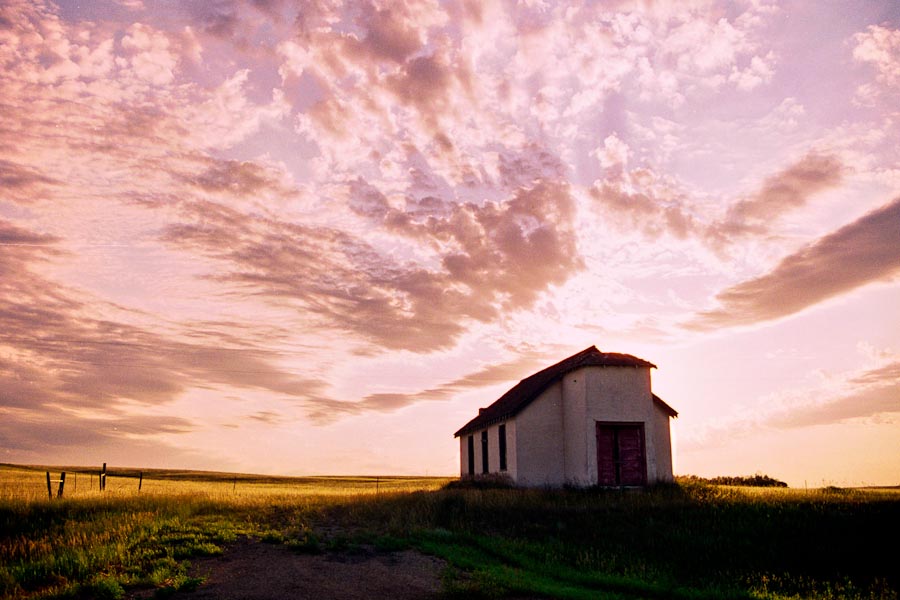
(For comparison, here's the raw image from my scanner:)
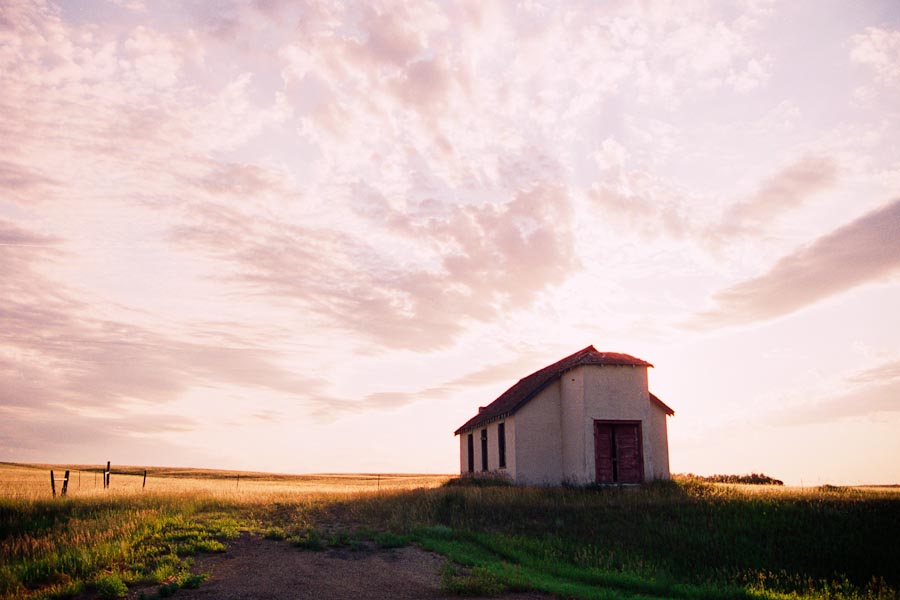
I'm still about 60 rolls behind that image in the scanning project, unfortunately, so other photos from the trip will have to wait a while.
Kodachrome 64, 20 July 1991, near Sturgis, N.D. Exposure unrecorded.
As I ride my bike past all the cars stuck in traffic this evening, I will think, briefly, about gasoline prices. So far this year, I've filled up my Volkswagen twice, for a total of $90 or so. Ouch, I said as I paid $50 for a tank last week, that's a lot. Of course, living in a dense urban area, taking public transit, and using my own legs to get around almost all the time (plus driving a car that gets 8 L per 100 km), I think gasoline eats up about 1% of my annual spending.
According to the Chicago Tribune, it actually doesn't make up that much of anyone's budget, but people still freak out about high gas prices for obvious reasons:
For consumers, there's no escaping the high prices, which helps explain their obsession.
Not only do many drivers see gas prices every time they fill up, but tracking the price is unavoidable because gas is about the only product consumers regularly buy that requires visiting a special store. So, they're intensely focused on a single product, as opposed to noticing the price rise of tomatoes when buying a full shopping cart of goods.
They also stand in front of the pump and feel the financial pain as the price digits whiz upward.
And why are gas prices so high? Economics 101, baby. Combine low supply with high, inelastic demand and you get high prices:

So how can we get lower gas prices? Use less of it. Increasing supply won't change the price much because of gasoline's demand inelasticity, meaning how much gas we buy doesn't respond to price increases very much. (The actual rate is about -0.25; that is, for every increase in price of 1, demand goes down about 0.25.)
The New York Times reports on new data about how languages diversified:
A researcher analyzing the sounds in languages spoken around the world has detected an ancient signal that points to southern Africa as the place where modern human language originated.
The detection of such an ancient signal in language is surprising. Because words change so rapidly, many linguists think that languages cannot be traced very far back in time. The oldest language tree so far reconstructed, that of the Indo-European family, which includes English, goes back 9,000 years at most.
Quentin D. Atkinson, a biologist at the University of Auckland in New Zealand, has shattered this time barrier, if his claim is correct, by looking not at words but at phonemes — the consonants, vowels and tones that are the simplest elements of language. He has found a simple but striking pattern in some 500 languages spoken throughout the world: a language area uses fewer phonemes the farther that early humans had to travel from Africa to reach it.
I'd like to get more information about this; in particular, how does it account for languages like Basque that seem unrelated to their neighbors?
For several reasons—about 730 of them, really—I'm at Raleigh/Durham Airport for a couple of hours between London and Chicago. Yes, a direct flight to Chicago today would have cost $730 more. Someday, we'll discover that airline pricing schemes actually tap into the deepest secrets of the universe; for now, I'll just scratch my head and sit at RDU until 5pm.
On the way out to London, I got a photo of a phenomenon I've seen many times but never documented clearly. You know how the planet is more or less spherical? Here's some proof:
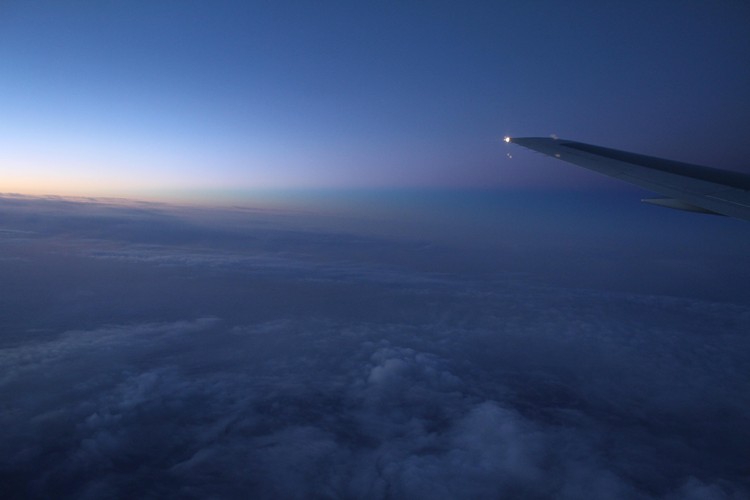
You can see this if you fly about 15 minutes past the terminator between night and day. The dark-blue wedge with the point on the left and the wide part under the wingtip is the earth's shadow.
I met one of my oldest surviving friends in York this afternoon, thanks to the fast and cheap railways they've got in the UK. It's one thing to stay in a hotel built before my home town was founded; it's quite another to walk along a wall built over a thousand years before that.
First obligatory photo: York Minster, which opened as a small wooden church in 627 CE, and achieved this form somewhere around 800 years ago:
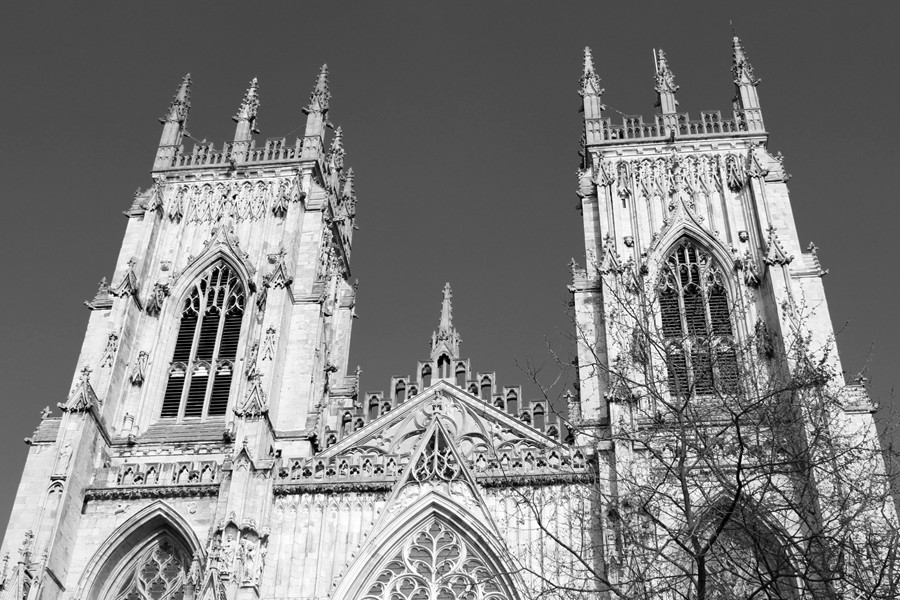
We also took advantage of an open house hosted by the York Glaziers Trust, who work to restore the stained glass at the Minster. I snapped this before seeing the "no photographs" sign:
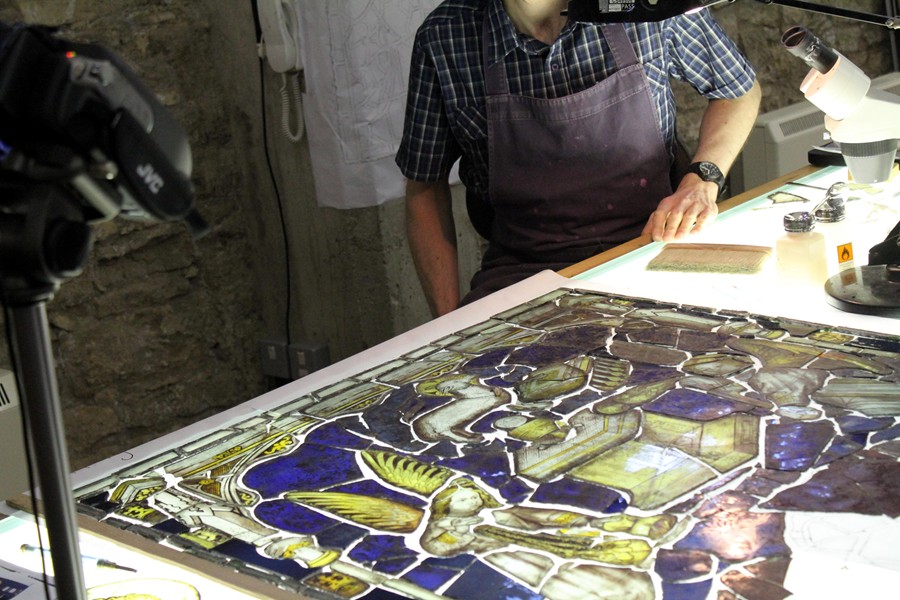
That's one panel of the 120 or so that make up the east wall of the Minster. John Thornton installed the windows about ten years before Columbus got lost in the Atlantic, or about 300 years before my country came into being. My friend and I both wondered if they'd ever dropped a piece of 15th-century glass, but we were both too chicken to ask the conservationists.
Getting out of York required jumping forward to the last few years, when York restored its Victorian-era railway station:
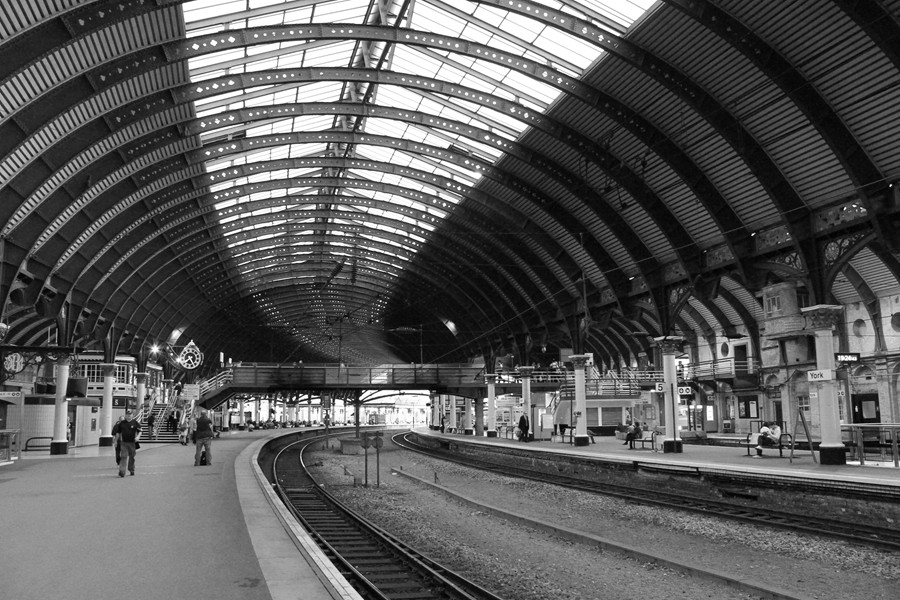
I've got one more day in the Land of Uk, so tomorrow look for some nighttime shots.
(About this post's title: for some reason I keep hearing the Swedish Chef in my head.)
I've walked on the Queen's Walk along the Thames about a half-dozen times, but on a day like today, I just had to do it again. This time, though, I had the beast with me, so I could do this:
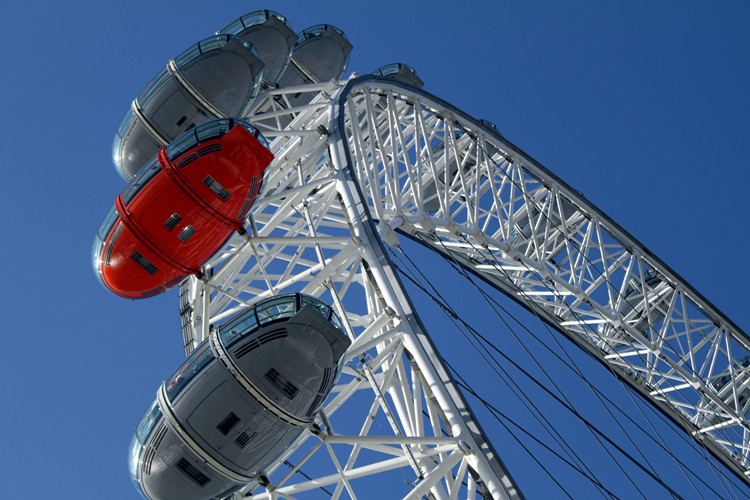
And this:
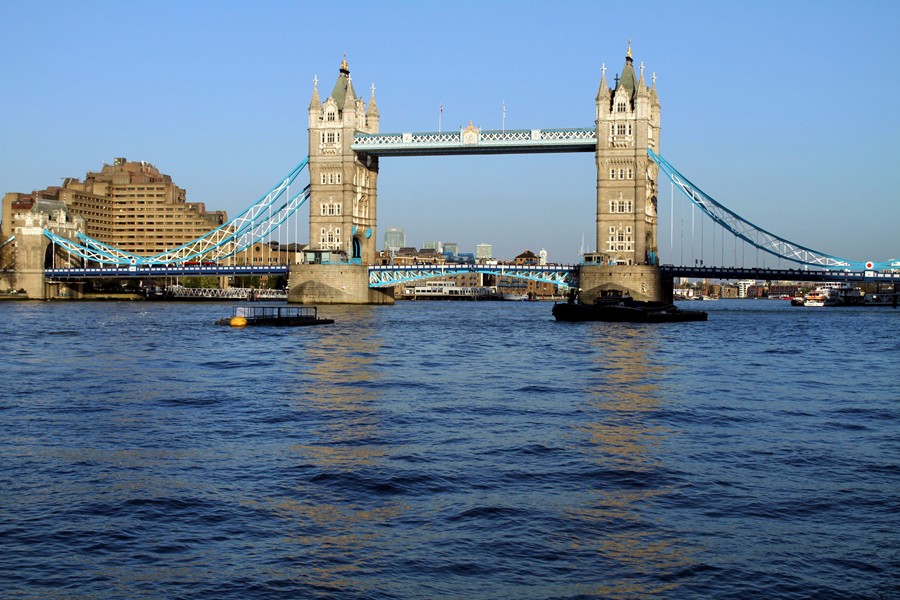
When I last photographed Tower Bridge on a sunny day, the painting crews hadn't finished yet. Today it looked perfect.
This is the Brompton Oratory, South Kensington, London, just today:
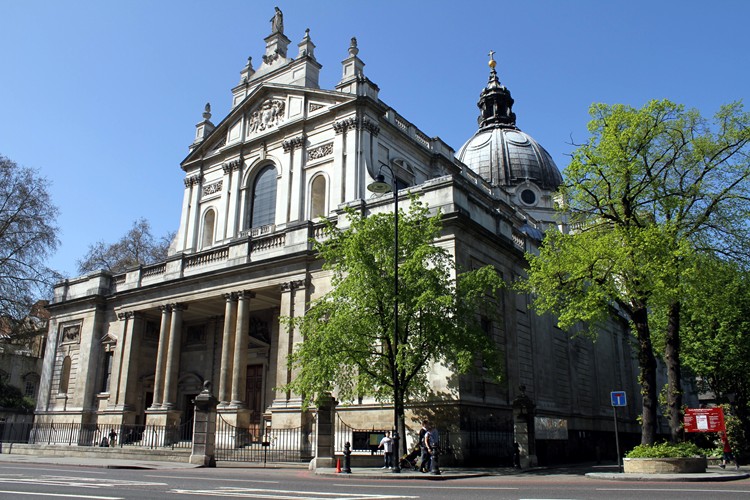
So what's the problem? The sun. It's out. In early April. And when I took the photo about two hours ago, it was 20°C outside.
More early-April madness:
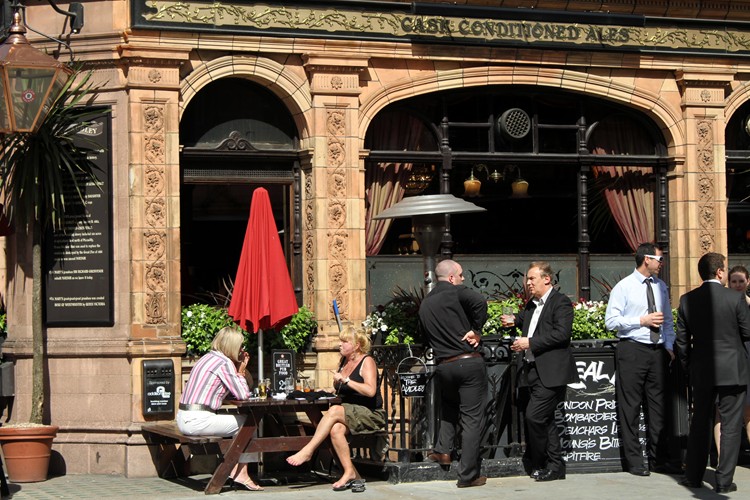
Just look, will you? Londoners eating lunch outside. Insanity!
The weather is so freakish that I've actually got a mild sunburn. A sunburn! In London! I don't even think they sell sunscreen in the UK. But I'm going to go have a look—just to make sure for myself that the weather really is this weird.
Because coming to the UK and not moaning about something would be like going to Wrigley and not having an Old Style, here goes. My troubles began last night when my plane arrived fifteen minutes early at Heathrow, and then we had to collect our bags from the spot where the baggage handlers had them waiting for us when we got through Border Control. This got me through the airport from touchdown to the Tube in 40 minutes, which is unacceptably efficient. The Tube itself cost almost £2 all the way to Central London, took nearly half an hour, and didn't even have any drunk people on it.
At least the lifts were out at Earl's Court so I could carry my bag up some stairs, and I had to deal with a comforting cock-up involving the hotel's credit-card machine, both of which made me feel like I'd gotten to the real UK. Unfortunately, the night clerk ruined it by working efficiently and professionally to get through the issue and get me checked in. Then, once that was done, I was unable not to find a curry restaurant still open, and I had to have a chicken tikka with actual spices and flavor procured by a polite and smiling—smiling, in London, the thought!—server.
Finally, this morning, when my room's Internet connection went out, the day clerk completely broke from British custom and offered to fix the problem himself, so that when I got back from getting some coffee, it worked fine.
Don't even get me started on the weather. I came all the way to the UK only to have the trip ruined by sunny skies and 20°C temperatures. I mean, not even one bloody cloud in the sky. Now I suppose I'll have to spend the entire day walking around in it, and possibly eat lunch sitting outside. One just doesn't do that in London in April; it's just not done.
I really don't know if I can take four days of this.
In my final installment from beautiful Hempstead, N.Y., I present two buildings that sprouted from parking lots. This one, behind Emily Lowe Hall, sits in what used to be the faculty parking lot south of Weed[1] and Adams. So far, no one has coughed up the requisite millions to rename it, so it's called "New Academic Building:"
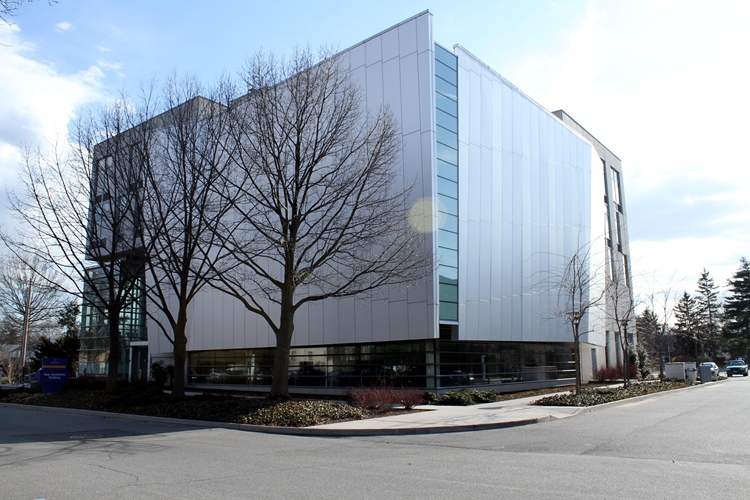
Seriously, I'm not making up the name:
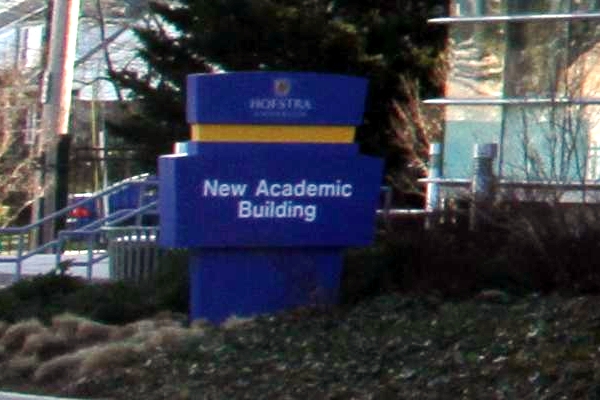
For comparison, here's a photograph taken from above the Hofstra Fair in May 1992. The new building in the photos above is in the parking lot in the lower right corner of this shot:
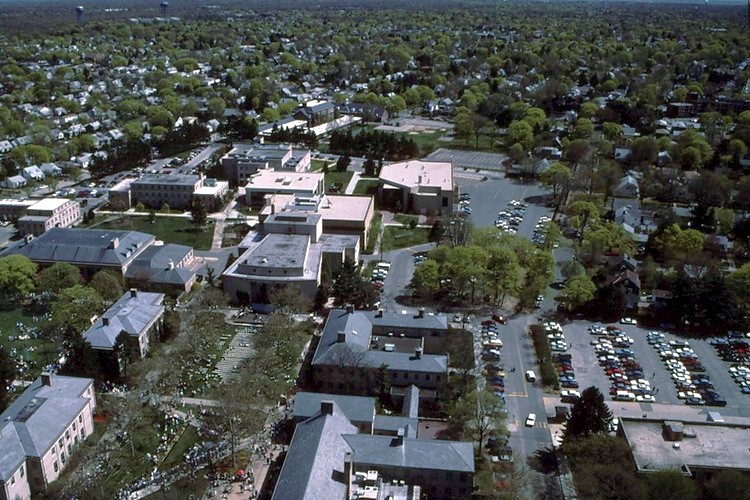
Here's the current campus map of the location:
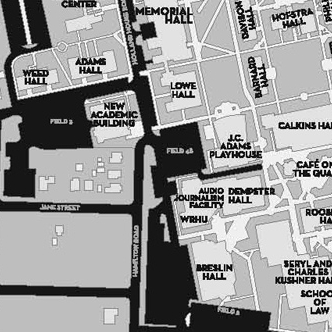
Then, on North Campus, sprouting like a boxy steel weed from what used to be the best parking spaces on campus, is "Graduate Residence Hall:"
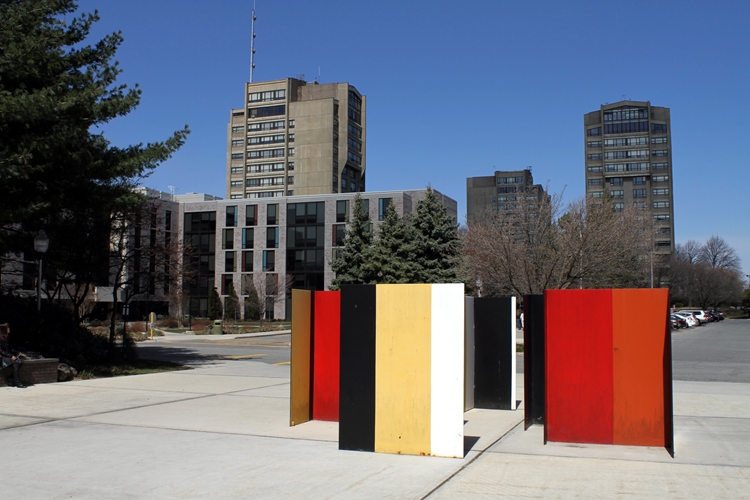
Another map inset for y'all:
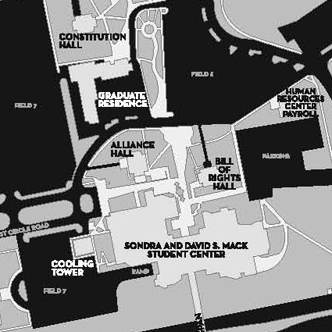
And the "before" photo:
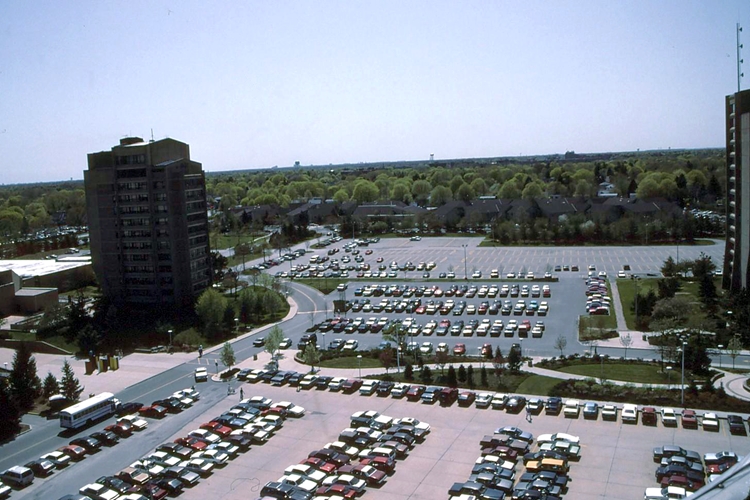
I might post a few more photos from the 1990s later. But for now, I think I'm all Hofstraed out.
Yes, Hofstra has a Weed Hall. No, they didn't put the chemistry department there.